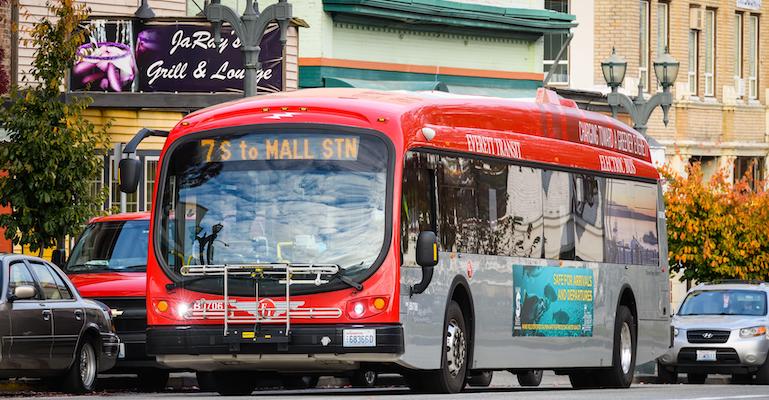CALSTART report shows 27 percent growth in full-size Zero-Emission Buses in the US since 2020.
January 12, 2022

CALSTART, the national non-profit transportation consortium has published its annual inventory of zero-emission buses, (ZEBs) "Zeroing in on ZEBs," providing insight on the current state of ZEBs in the US. Full-size ZEBs have grown to 3,533 buses nationally, an increase of 27% since the 2020 survey. The report notes that most ZEB fleets are small, with ten or fewer buses—coming funding will be instrumental in scaling fleets. The study has been published ahead of $5.25 billion in Infrastructure Investment and Jobs Act funding through the Federal Transit Administration's Low-No Program that will take place in 2022.
California leads in the deployment of full-size ZEBs, with New York and Washington second and third in the totals by state. This year's report also includes a breakdown of full-size and small buses—small ZEB deployment increased by 51%.
"Early adopters such as large transit agencies in California, New York, Florida, Kentucky, and Oregon continue to lead, but still are not at scale," said Jared Schnader, director of Bus Programs at CALSTART in a news release. "Smaller transit agencies and regions that are not familiar with zero-emission technologies need additional resources and effort to begin their transition."
Here are some of the additional key takeaways from the CALSTART news release:
Airports have adopted 131 full-size and 119 small ZEBs. This increase represents 35% and 19% growth from 2020, respectively
New York significantly increased its orders of full-size ZEBs, from 77 in 2020 to 195 in 2021, all of which are battery-electric busses (BEBs)
Of the 67 transit agencies that have small ZEBs, 22 only have one bus. 58 public agencies have four or fewer buses
Fuel cell electric buses (FCEBs) appear to be gaining interest, with California and Massachusetts adding to their FCEB fleets and Texas and Washington transit agencies adopting FCEBs for the first time
The 2021 total for FCEBs is 169, up from 87 in 2020
One FCEB can meet the operational needs of two battery-electric buses (BEBs) on longer routes
According to CALSTART, “ ’Zeroing in on ZEBs’ is based on data gathered primarily through local, state, and federal award documents, press releases, phone interviews, and validated via sales information from bus manufacturers. As there is no centralized accounting of ZEBs, and transit agency plans for adoption can shift and/or be delayed, it is important to note that figures contained in the report should not be considered static.”
Kevin Clemens is a Senior Editor with Battery Technology.
About the Author(s)
You May Also Like





